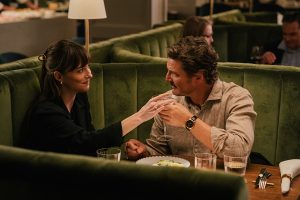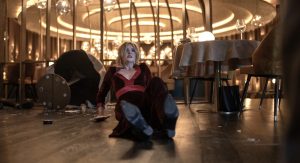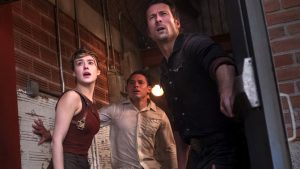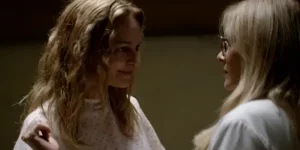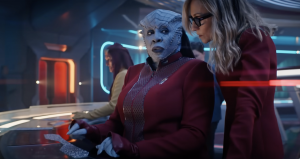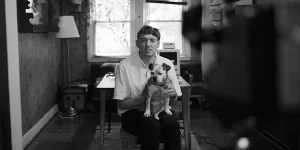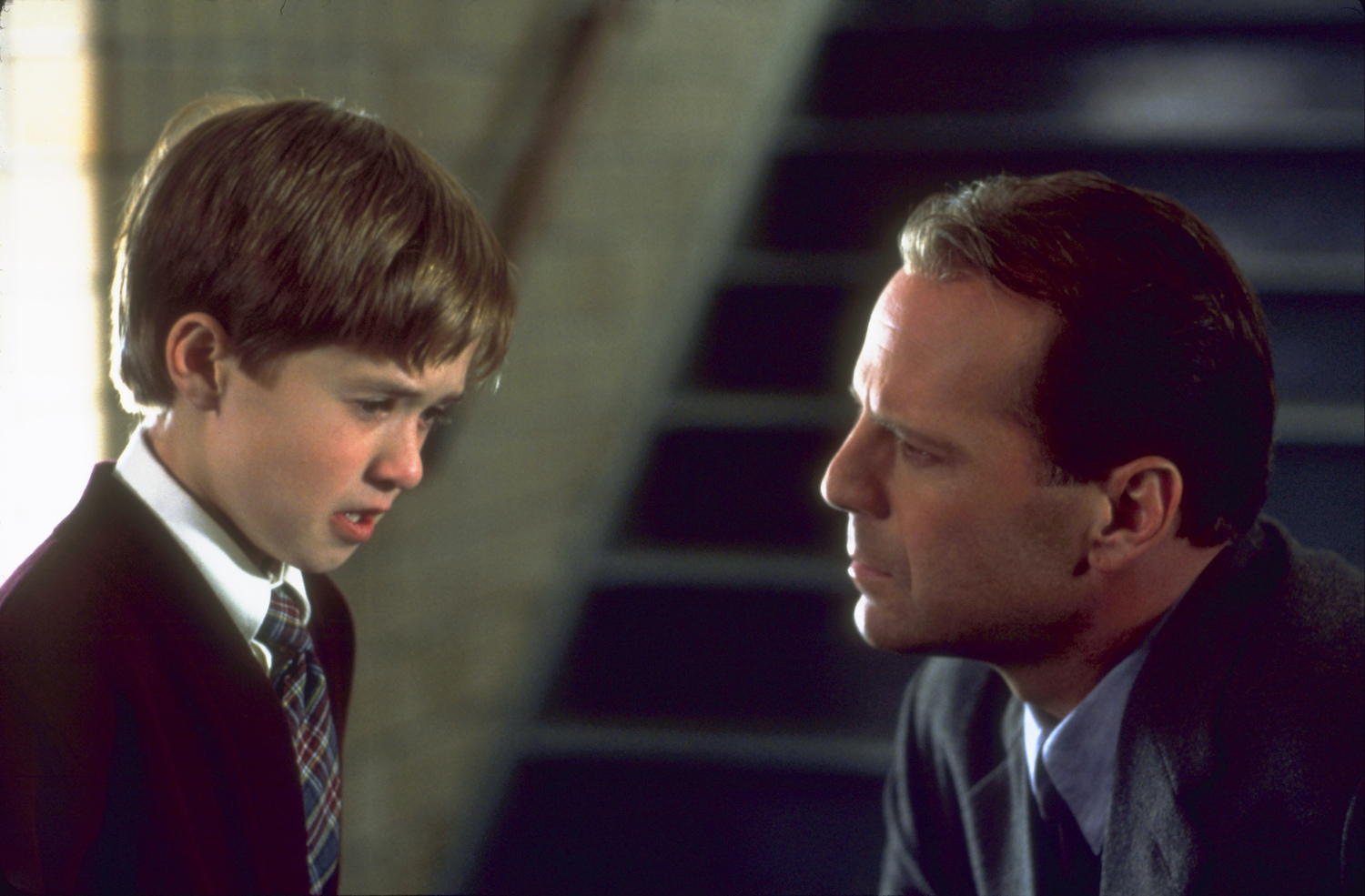
Warning: contains spoilers for…well, loads of stuff.
Before we start this article, we need to deliver possibly one of the most comprehensive spoiler warnings in the history of the site, as this article will contain spoilers for Doctor Who series 14, The Twilight Zone episodes “Five Characters in Search of an Exit”, “To Serve Man”, “Nothing in the Dark”, “Death Ship”, “Judgement Night”, “The Hitch Hiker”, “Eye of the Beholder”, the Black Mirror episodes “Playtest” and “Hang the DJ”, and the movies, Existenz, Vanilla Sky, The Thirteenth Floor, The Usual Suspects, Planet of the Apes, The Village, Citizen Kane, Memento, The Others, The Sixth Sense, Fight Club and the books La Planète des singes, The Strange Case of Dr. Jekyll and Mr. Hyde, Cinderella, and the biblical parable of the Good Samaritan.
Twist endings have always been a bit of a double-edged sword. When they land right, they’re brilliant and clever and beloved, when they don’t, they can feel cheap and leave the audience feeling cheated or even angry. Take a look at M. Night Shyamalan, whose name has become a byword for the shock twist ending – but has elicited both reactions at different times of his career.
So what makes a twist ending good or bad? What is the difference between being tricked and loving it, and being tricked and hating it? In short, what is a twist ending for?
To Gotcha the Audience
Let’s start with the reason that the audience who responds negatively to a twist probably suspects: it’s to make the storyteller seem clever and the audience look foolish. “Ha! Tricked you!”
The Turkey City Lexicon, a glossary of terms for science fiction writing workshops put together by authors Lewis Shiner and Bruce Sterling, defined this as “The Jar of Tang”. A band of travellers struggle to cross a mysterious orange desert under a dark and starless sky, and then at the end of the story – TWIST! – it turns out the desert is the inside of a jar of Tang powdered orange drink, and the travellers are microbes.
It is a twist that exists for no reason other than for there to be a twist, and science fiction is littered with examples. The television home of the twist ending is, without a doubt, The Twilight Zone, which, possibly due to Rod Serling taking on most of the writing duties himself and having to work to some tight deadlines, included various takes on this sort of twist.
The most egregious is “Five Characters in Search of an Exit”, which plays out largely like the plot of the movie “Cube” except that at the end the characters are revealed to be toys in an orphanage toy collection bucket. Or there’s “To Serve Man”, an episode that loses none of its horrific effectiveness despite being essentially built around a pun (It’s a cookbook!).
Often, even when done well, it can feel superfluous. The Twilight Zone episode “Third from the Sun” is a fantastically tense examination of a family preparing to escape nuclear Armageddon, but does the story gain anything from the reveal that the planet they are escaping to is Earth?
The archetypal cheap twist is “It was all a dream” and that twist gets played straight a lot when virtual reality and simulations get thrown into the mix. Vanilla Sky, eXistenZ, Vanilla Sky, and The Thirteenth Floor, as well as the Black Mirror episodes “Playtest” and “Hang the DJ” all pull different versions of this one.
To take it to its extreme, look at The Usual Suspects, where the entire twist amounts to “the narrator was lying the entire time”. And perhaps that’s why, no matter how well executed they are, these twists can leave the audience feeling angry. Storytellers lie to us by definition – revealing that you’re lying when that’s what we’re paying you for, doesn’t make you clever.
To Change Your Perspective
A big part of the reason why audiences today tend to worry so much about spoilers (perhaps to excess – argue about that in the comments) is that storytelling is not just about what events happen, it is about what information is divulged to the audience and in what order.
Take the fairy tale of Cinderella – the archetypical rags to riches story the way it is usually told – but tell the story from the prince’s perspective, and it becomes a detective story about trying to determine the identity of a mysterious and beautiful stranger.
In La Planète des singes by Pierre Boulle, variously called Monkey Planet or Planet of the Apes in English, the book starts with astronauts finding a manuscript that describes someone’s journey to a planet where apes rule over humans, and concludes with the astronauts dismissing the story as fantasy – obviously there’s no such thing as intelligent humans! It’s a classic “Jar of Tang” twist, otherwise referred to as “For you see, I am a dog!”
When King of the Twist Ending, Rod Serling adapted the book for the screen, he introduced a twist ending of his own. A twist ending so famous, that many a video, DVD and Blu-ray cover saw no problem with giving it away on the cover. The planet of the apes, you see, was Earth all along!
It’s a great gut-punch to end on, but it also changes our perspective on the entire story up until that point. This is no longer a story of space exploration, but one of post-apocalyptic survival. The ape’s warnings of the savagery and violence of humanity are not merely an inversion of the human-ape relationship we’re familiar with, but a direct comment on the human drive for self-destruction.
Again, The Village, one of M Night Shyamalan’s less-well-thought-of Twist movies, reveals that the danger its community is hiding from is not a monster, but the modern world as we know it (“The Most Dangerous Monster is Man” is one of the classic recurring twists, and one The Twilight Zone returned to frequently).
Outside of the fantasy and sci-fi genres, Citizen Kane spends the movie speculating on the meaning of his last words, searching for a deeper meaning, only to reveal that nothing he achieved ever quite matched the simple childhood joy of riding a sledge in the snow. Memento gives us an amnesiac’s quest for revenge, only to reveal that he has already had that revenge several times over, and by the same token, he finds that quest far more fulfilling than the revenge itself.
To Give Us a Second Story
When a twist is done well, it means that on the rewatch it is almost a second movie. “The protagonist was dead the whole time!” is an old twist. The Twilight Zone used it in a few episodes, “Nothing in the Dark”, “Death Ship”, “Judgement Night” and “The Hitch Hiker”, to name a few, as does Alejandro Amenábar’s The Others. But the film we all think of first when you name that twist is The Sixth Sense, the twist ending that first secured Shyamalan’s reputation for twist endings.
And you can never watch The Sixth Sense the way you did the first time (if you managed to see it without knowing the ending) because you read every scene differently. You can’t not notice how nobody except the child addresses Bruce Willis’s therapist directly, how even his interactions with his wife seem stilted and one-sided.
The same is true of Fight Club. On that second watch-through, you are seeing everything through the lens of Tyler Durden’s true identity, and every characters’ interactions and responses to him become clearer in that light.
Sometimes this is to the point where the original story is completely destroyed. The difference between The Strange Case of Dr. Jekyll and Mr. Hyde, the novel by Robert Louis Stevenson, and virtually every single adaptation of that story ever made, is that the fact that Jekyll and Hyde are the same individual is a shocking twist held back until the very end of the book.
But even during that first read-through, everything you need to see the twist is clearly laid out before you, you just need to see it. And that is the key thing about a well-executed twist, all the information you need is already there before the big reveal. It doesn’t just change your perspective.
To Reveal Audience Bias
Stop me if you’ve heard this one before.
A father and son are in a car accident and are both badly hurt. Ambulances arrive and for some reason take both patients to different hospitals. The boy needs surgery to survive and is wheeled into the operating theatre. But before the surgeon can begin operating they say “I can’t operate on this patient. He’s my son.”
How is this possible? Because the surgeon was his mum! Wow! Did you see that coming? A woman who is a doctor? Because they can do that! Mind. Blown.
Or how about this – a guy gets mugged and left for dead by the roadside, and a priest and Levite come along, but avoid the bleeding figure. Then the person who does help him is, get this, a Samaritan! A good Samaritan, if you can imagine such a thing!
Okay, so maybe these stories don’t land with modern audiences quite the way they once did. But they are extremely blunt and obvious examples of the function the twist ending can perform when it does work. By confounding your expectations, it illustrates what those expectations are.
To change your perspective, the storyteller first has to know something about where your perspective is in the first place, and once they know that, they can weaponise it.
Take our detective story version of Cinderella. The “twist” in that version of the story relies on the idea that the prince, being a royal type, would be shocked to discover that the woman of his dreams is a poor stepsister clad in rags and spending her days in drudgery and housework.
A classic Twilight Zone example is “Eye of the Beholder”, about a woman with severe facial disfigurement who is about to undergo cosmetic surgery. The episode manages to carry you an awful long way without noticing that you haven’t seen anybody’s face, until at last the patient’s bandages are revealed to show her distraught appearance at her conventionally beautiful features, while she receives sympathetic looks from doctors and nurses that look somewhere between pigs and chimps. Like most Twilight Zone stories, it’s not subtle but makes a clear point about how arbitrary our standards of beauty are by turning the viewers’ own against them.
Consider Doctor Who series 14 episode “Dot and Bubble”. In it, the Doctor and Ruby are blocked by a firewall from landing the TARDIS inside an outpost colony. “Finetime” is populated exclusively by the young and wealthy, whose social media obsession is blinding them to the fact that they’re being steadily picked off by giant killer slugs. Remotely, Ruby and the Doc guide an influencer named Lindy Pepper-Bean away from the creatures, and eventually offer her and her pals a TARDIS ride to safety, which they refuse in disgust. Why? Because Lindy and her mates are white supremacists and the Doctor is Black.
That ending proved to be divisive. Although Ncuti Gatwa’s performance – the first scene of this series he filmed – was undeniably powerful, to some people the episode’s reveal that the moon of Finetime was a white supremacist colony felt cheap, using the very real and serious issue of racism as a kind of “gotcha” for the audience. As our own Stefan Mohamed points out in his review, “It’s bigger and more important than a vicious twist ending.”
All the information you needed to guess the “Dot and Bubble” twist is there. Lindy Pepper-Bean’s instant negative reaction to the Doctor, paired with her more receptive attitude to Ruby, the way she doesn’t instantly realise the Doctor is the same person when she sees his face again. But most of all the episode makes no secret of the fact that everyone on this planet is white. A huge part of the first act of the episode is just row upon row of white faces. The only way the episode works, the only way Russell T Davies could hope for the episode to work, is that he was banking on an audience so acclimatised to TV shows and environments where literally everyone is white that they wouldn’t notice anything amiss.
Not that Davies isn’t above leading us to look the other way. It’s not a coincidence that the episode starts off looking like a Black Mirror-esque satire of social media “bubbles”, bringing to mind criticisms typically made of the young and left wing. And the episode and its title approaches the meta by pointing at the audience and their bubbles of preconceptions that everything is filtered through.
Which again, is why twists like this can provoke anger. Those assumptions about the audience’s preconceptions can feel like accusations, accusations that sting all the more if the storyteller manages to pull off the magic trick.
Trap is in cinemas now in the US and arrives in the UK on Friday August 9.
The post What Are Movie and TV Twists For? appeared first on Den of Geek.
